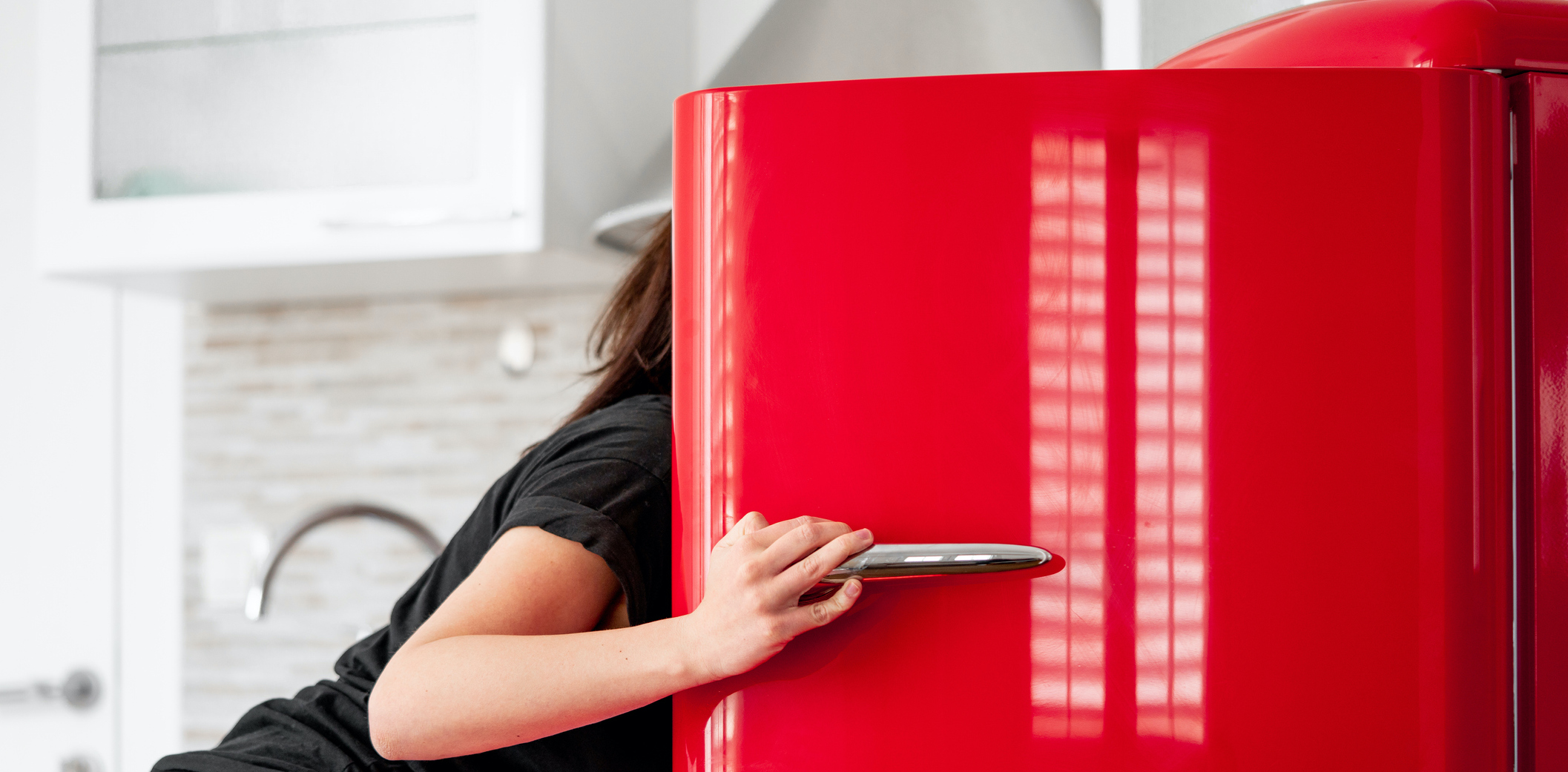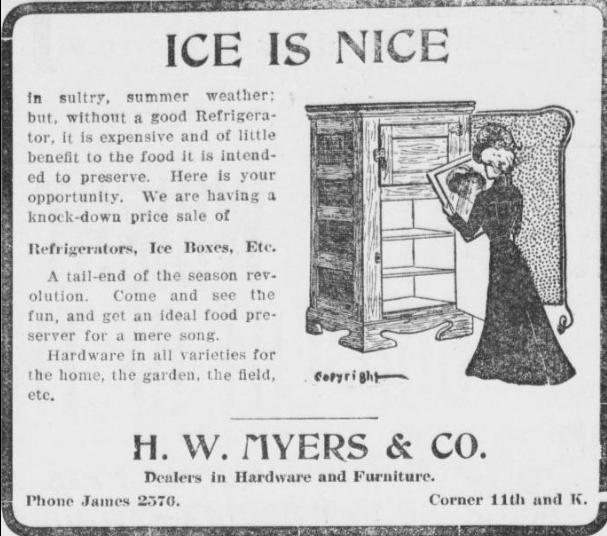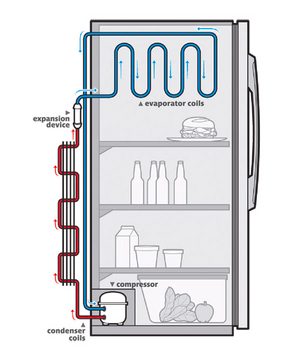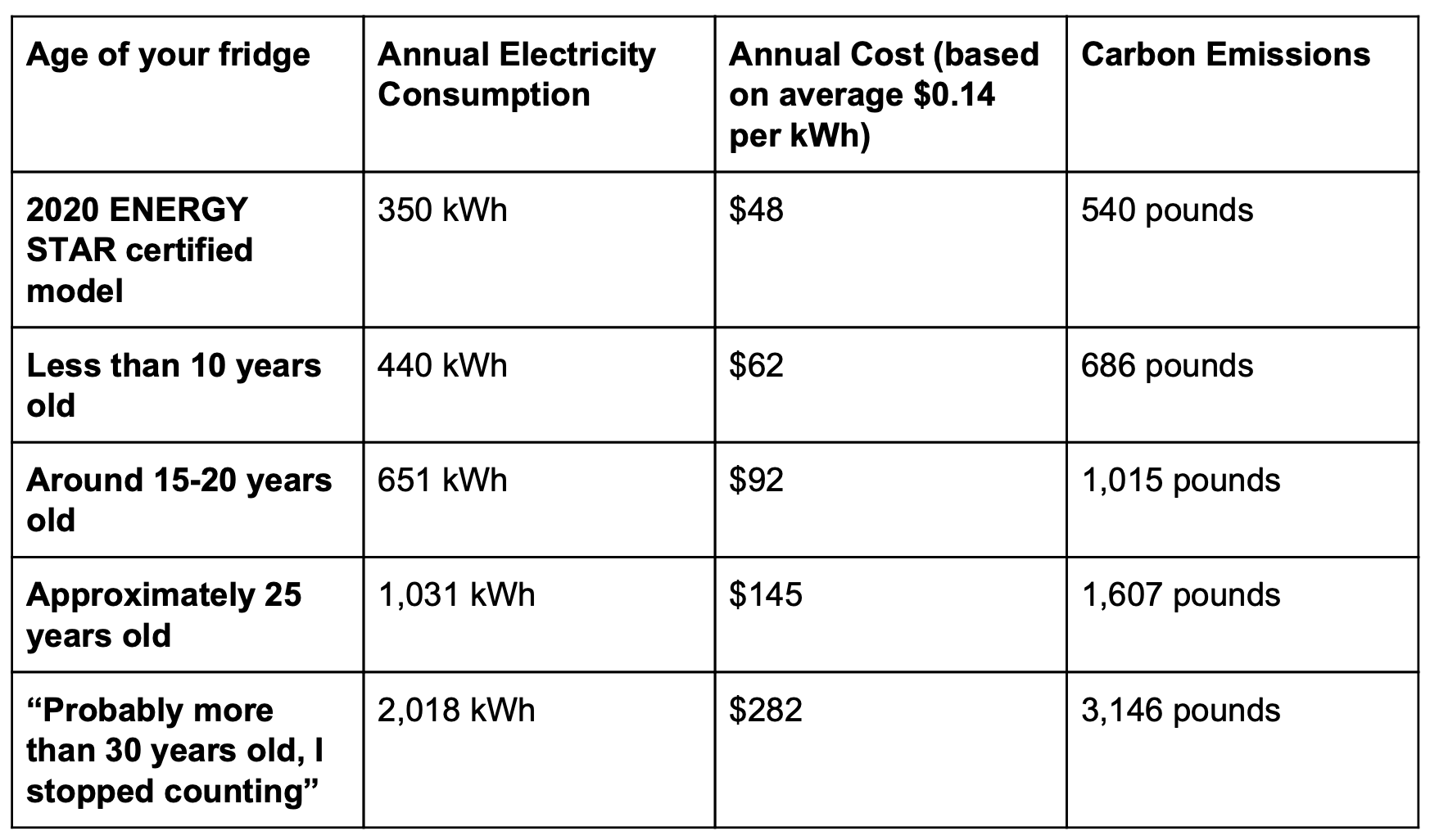During summer, the fridge can seem like a tiny winter wonderland — a great place to crawl into and escape the heat. As you stand in front of your fridge cooling off for a moment or simply wondering what to snack on, consider that today’s refrigerator makes up 7% of the average home’s total energy consumption annually. If it’s new, however, it’s about 50% more efficient than refrigerators manufactured 20 years ago, representing a century of technological evolution.
Prior to the invention of the modern refrigerator, people used natural methods to store food. Ice houses, in Europe and North America, date back to the times of Alexander the Great and stored up to 2,700 tonnes of ice harvested from lakes and rivers in winter.
In agrarian settings, farmers constructed wooden buildings over springs to preserve dairy products with the help of cold water. Another widely used method of food preservation was salting or smoking meat and fish. Vegetables and fruit could be dehydrated at harvest and soaked before cooking. These natural preservation methods enabled families to store food for months.
By the 19th century, ice men delivered ice to households in towns and cities. A large block of ice was put in the icebox, where it gradually melted until a new block was delivered. It was a messy and inefficient approach to refrigeration before electrification brought significant changes to kitchens.
The first practical approach, vapor-compression refrigeration, was invented in 1834 and it’s still the most widely used domestic refrigeration system today. In the back of your fridge, there’s a compressor at the bottom interior. The compressor adds pressure to the circulating gas, called refrigerant, causing the gas to warm up and turn into liquid while traveling through the coils (in red).
Then before entering the fridge, the refrigerant passes by the expansion device, reducing the pressure and drastically cooling down the refrigerant which then starts to evaporate. The refrigerant in the form of gas then absorbs the heat in the fridge, going through the evaporator coils (in blue), and releasing the heat from the coils in the back of the fridge. The cycle repeats itself continuously.
Debuted in 1927, “The Monitor-Top” refrigerator by General Electric was the first fridge to become widely used, replacing the icebox. It consisted of a small, steel cabinet with a single door and a big compressor on top that used sulfur dioxide as refrigerant. Other refrigerants such as ammonia and ether were common until the 1930s, but they were highly flammable and toxic if they leaked out of the refrigerator. After people died in Europe because of gas leaks from fridges, Einstein patented a safer refrigerator that had no moving parts and required only a heat source and ammonia, but it was never commercially produced.
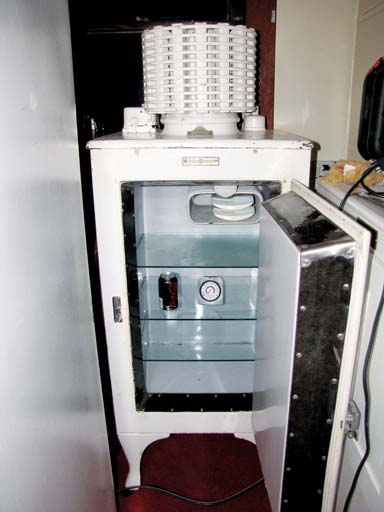
Just a couple of years after the launch by General Electric, scientists invented what is commonly known as Freon, a non-flammable, low toxicity replacement for the dangerous refrigerants. Freon was mass-produced and used in millions of refrigerators as well as the first home air conditioning units starting in the late 1930s. In 1987, scientists discovered that Freon caused ozone depletion and it was banned in the US. Freon is now labeled as a “super-greenhouse effect” gas and other refrigerants have taken its place.
Refrigeration experienced its biggest leap forward in efficiency with the debut of the ENERGY STAR designation. Today ENERGY STAR certified refrigerators use 70% less energy than those of the 1970s.
Through the efficiency gains of the ENERGY STAR program, Americans saved enough energy by 2010 to avoid greenhouse gas emissions equivalent to those from 33 million cars, while saving nearly $18 billion on their utility bills.
Frozen food was considered a luxury in the 1940s until the first freezers were built into refrigerators as a separate compartment. These freezer compartments would build up ice on their walls until the 1950s and 1960s when automatic freezer defrosting became common.
Nearly 1 in 4 Americans have a second fridge or a separate chest freezer to store food they buy in bulk. Chest freezers are commonly referred to as a “deep freeze” because they maintain a lower temperature than the freezer compartment of a refrigerator and have thick insulation that prevents cold air from escaping. Energy Star certified chest freezers consume around 210 kWh annually, which is the around the same amount a minifridge consumes and 50% less energy than a 15 year old fridge. So if you’re looking for more freezer storage, send your old fridge to the recycling center and purchase a chest freezer instead.
In the past decade, there has not been a drastic change in the efficiency of refrigerators but older fridges use significantly more electricity compared to the current ENERGY STAR fridges. ENERGY STAR’s Flip Your Fridge Program analyzes your current fridge’s energy consumption and cost, and helps you decide whether you could save more by recycling your fridge now and replacing it with an ENERGY STAR certified one. You can reduce your carbon footprint by thousands of pounds, while also saving hundreds of dollars.
In the last few years, new features have been added to refrigerators that turned them into luxurious but more energy consuming home appliances. A new fridge consumes about 390 kWh, but the exact same fridge with the addition of an ice maker uses approximately 471 kWh annually. The ice maker uses 81 kWh which translates into an additional $11 on your annual electricity bill. You can use a classic plastic ice tray instead to save. New fridges often include smart home features that prepare your morning coffee, let you talk with virtual assistants like Alexa, or include a touch screen that tells you about the weather.
Most energy usage in a refrigerator comes from the compressor turning on and off as it cycles the coolant. When Sense identifies your refrigerator, it’s typically detecting the compressor cycling. For many fridges, Sense may also detect the defroster (a heat element) or the light inside the fridge, especially if it’s a small incandescent bulb.

How to keep your refrigerator running efficiently
Don’t install your fridge next to hot appliances — Keeping your fridge away from the heat generated by your oven, stove, and dishwasher will minimize the cooling cycles your refrigerator needs to run (and reduce your utility bill).
Clean the condenser coils regularly — The coils on the back (or bottom-front) of your refrigerator release heat. If they accumulate dirt and dust, the compressor has to work harder, which wastes energy and adds wear to the compressor, shortening its life. Every few months, use a vacuum hose attachment or brush to clean dirt or debris from the coils (especially if you have a pet that sheds!)
Inspect the seals and gaskets — The rubber (or plastic) strips that seal the doors of your refrigerator are vital for the fridge ’s efficiency. With warm water and a mild soap, gently rub off any dirt on the seal. To check if the seal is loose, close a dollar bill in the door so that it’s half in and half out of the fridge. If the door gasket isn’t tight enough, the bill will fall out (and you should probably look into replacing the seal).
Check the internal temperature — Is your fridge too cold? Energy.gov recommends an internal fridge temperature of 35F – 38F. Setting your fridge thermostat to the recommended temperature will keep your fridge compressor from running overtime to maintain colder temperatures and ensure a longer lifespan for your refrigerator.
Limit how long (and often) you open the refrigerator door — A refrigerator requires more energy to return to the set temperature after the warmer outside air gets in. It can be tempting to stand in the cool blast from the fridge and decide what to eat, but try to make those open door moments brief.
The future of refrigerators
Manufacturers are constantly looking for ways to improve the efficiency of refrigeration systems. One recent innovation uses linear compressors as the cooling system in refrigerators, making them quieter and more energy efficient. Another practical innovation is LG’s InstaView, which has a window panel on one of the doors so you can view what’s inside your fridge before opening the door.
If you need to purchase a new fridge, look around in the fall, when manufacturers introduce new models and retailers offer discounts on the current year’s models. As you shop, check out the ENERGY STAR site for the most efficient models. Refrigerators can last 10 to 18 years, and those energy costs can add up over time.
This blog was researched and written by Sense summer intern Selin Aker. Thank you, Selin, and best of luck back at college.
